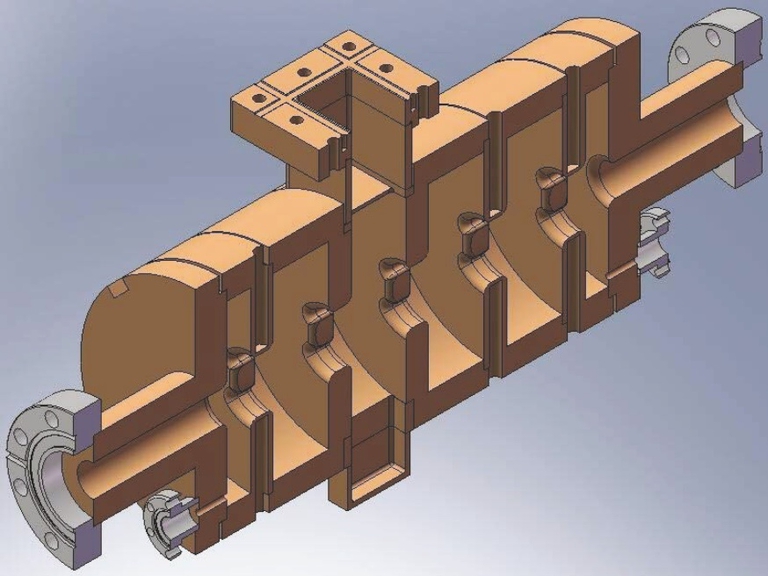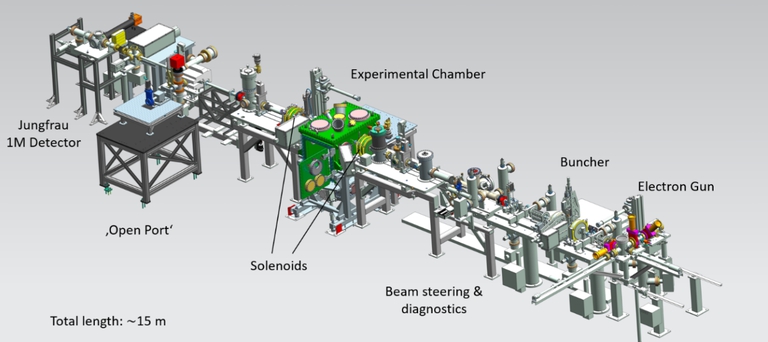REGAE accelerator
Time resolved diffraction with relativistic electrons
REGAE accelerator
REAGE provides electron beams of outstanding quality and stability to perform 3D structural analysis and pump-probe type experiments on quantum materials and biological samples.
REGAE employs an S-band photocathode RF gun to produce electron bunches of typically 100 fC charge with a normalized emittance of about 20 nm [1]at an energy of 3 – 5 MeV. Focusing solenoids, beam steering and diagnostics elements are distributed along the beam line and give a high flexibly of the transverse beam optics to adjust the beam parameters according to experimental demands. Figure 1 displays a schematic overview of the electron accelerator. By means of a buncher cavity the initial bunch length can be compressed to below 20 fs at the sample position. The bunch length is presently limited by the available S-band Transverse Deflecting Structure (TDS) for bunch length measurements [2], while in simulations bunch lengths to below 1 fs have been reached [3]. In the so-called stretcher mode, the buncher cavity can be tuned in a way to reduce the relative energy spread of bunches down to about 10-5 for comparatively long bunches.

Figure 2: The S-band TDS with optimized geometry is powered by a 5 kW RF amplifier and achieves a resolution of ~20 fs.
Efforts to develop a bunch length measurement system with higher resolution are ongoing [4]. The bunch repetition rate of REGAE is presently limited to 12.5 Hz due to an interference with magnetic fields from the nearby operating DESY synchrotron.
